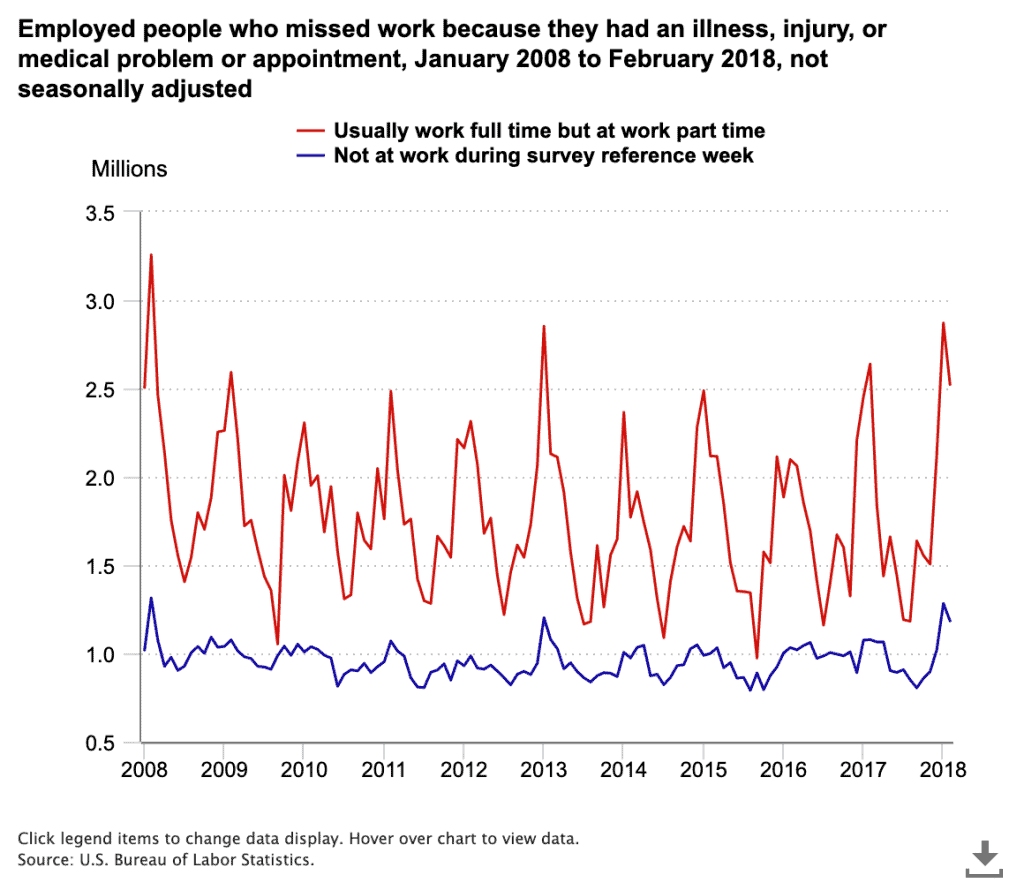It comes as no surprise that studies show healthier employees lead to more productivity in the workplace. The implications of these findings, however, may vary depending on the source and their aim. For example, if employers believe that workplace wellness programs can generate savings for their company, employers will invest heavily into wellness programs to retain employees long-term and lower absenteeism and presenteeism (essentially, being physically present yet absentminded or ineffective while on-the-clock) due to health-related issues. By 2026, the corporate wellness market will be a $90 billion industry, but are wellness programs a replacement to regular, affordable access to a doctor?
What is a wellness program? According to the healthcare.gov website, it is:
A program intended to improve and promote health and fitness that’s usually offered through the work place, although insurance plans can offer them directly to their enrollees. The program allows your employer or plan to offer you premium discounts, cash rewards, gym memberships, and other incentives to participate. Some examples of wellness programs include programs to help you stop smoking, diabetes management programs, weight loss programs, and preventative health screenings.

The goal of having employees on wellness programs would be to increase productivity which in turn, increases business profits. This goal makes sense, considering health and productivity costs totaled approximately 27% of payroll in the US, a 22% increase from 2005, according to Willis Towers Watson and National Business Group on Health. The group found that health-related productivity losses cost employers substantially more than medical and pharmacy costs, as employees with health problems lead to 2 hours and 29 minutes of lost productivity and 41 minutes of absence each week from work. Healthy employees, however, will not only prevent a loss in revenue by saving costs, but increase productivity and profits for companies.
When examining how to save company costs in relation to health, the health management industry has historically focused on a medical cost-savings model. The result has led to peer-reviewed research linking health risks to increases in medical costs. However, medical cost savings is not always a priority for general managers. When deciding upon health management interventions that would be needed in order to produce medical cost savings for a company, the health management industry was led to a productivity savings model, which connects health risks to productivity losses and health management interventions to productivity improvements. For example, health dangers recognized as fields of prospective savings for employers were obesity, high blood pressure and elevated blood glucose. Employers can save millions by cutting costs related to these diseases.
This is where the solution might seem simple: to increase profits, increase wellness programs. Increase wellness programs, increase productivity. However, the reason wellness programs cannot be relied upon as the contributor to increasing productivity is because an increasing number of studies have shown conflicting results for wellness programs. Some suggest that wellness programs are ineffective, while others use business performance metrics to suggest that wellness programs are effective. The most recent large-scale study, however, says workplace wellness programs do not actually reduce costs, reduce absenteeism or improve workers’ health.
There must also be acknowledgement of the limitations of the studies of wellness programs and business performance metrics, such as failing to have a comparison group, or determining if employees in the wellness programs are a self-selected population group that is already healthier or more motivated when compared to their peers. It would also be remiss to not mention that incorporating wellness programs into companies has generally been fueled by incentives in the federal Affordable Care Act.
It is difficult to generalize about the drivers of workplace performance and accordingly, hard to draw overall conclusions about how to increase profits through workplace productivity specifically as related to health. What is clear is that wellness program or not, less access to a regular primary care provider increases health risks. Moreover, wellness programs cannot cure you of the flu, an injury or medical problem, nor do they help manage disease. In January 2018 alone, 4.2 million workers missed work because of an illness, injury, medical problem or medical appointment, higher than previous years, according to the U.S. Bureau of Labor Statistics.

When patients are pushed out of emergency rooms and are not able to spend enough time with doctors, on top of waiting for an average of 24 days to schedule a first-time appointment with a physician (a 30 percent increase since 2014), up from 18.5 days, this impedes access to health care. Employees without access to general health services can contribute to low productivity which will ultimately dip into company profits.
Direct Med Clinic offers an end to high costs of workers compensation premiums, provides a solution to managing recordable injuries, and gives employees access to health care. Since Direct Primary Care seeks to restore the patient-doctor relationship, the length of the visit allows doctors to spend the amount of time they need to truly assess patient wellness.
Direct Med Clinic also provides virtual care and telemedicine to all of its members. Direct Med Clinic decreases the amount of wait time for scheduling appointments and overall, saves employers money.

Finally, employees can receive continuous care at an affordable cost and manage their health, increasing company profits. Of course, good nutrition, sufficient sleep and an active lifestyle is all a vital part of leading a healthy lifestyle, but true health is wealth, and access to affordable health care is the best way to maintain employee health, giving your company wealth.


Recent Comments